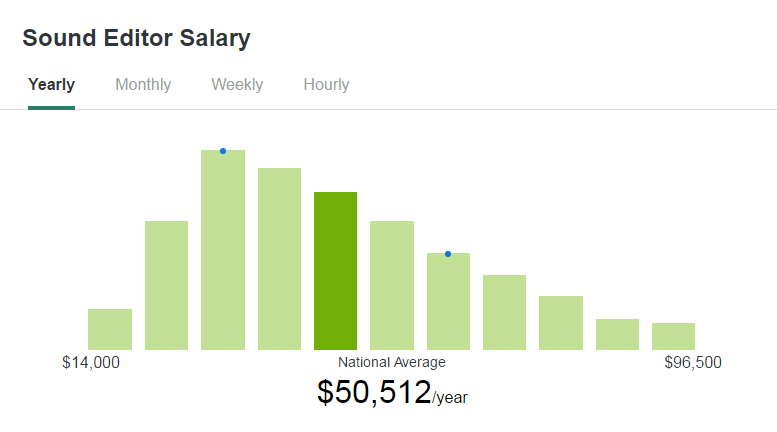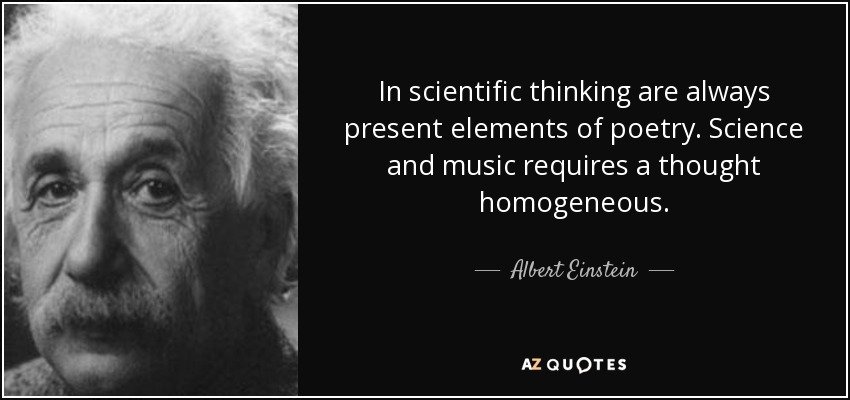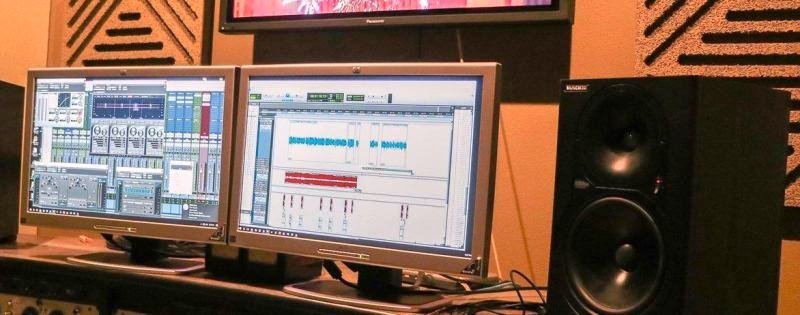How To Be An Excellent Sound/Music Editor (And Get An Online Job With It)

Let me urge you to perform a simple experiment on your own, try watching a dramatic movie or a horror movie without any sound at all. Even without actually doing it, you can almost visualize the evident outcome: you wouldn’t be captivated enough by the drama, and you won’t be scared with that horror movie at all, no matter how horrific it might be.
What’s with this kind of intro? Well, I want to emphasize the importance of sound as a major element in movies and videos, and in the entire avenue of multimedia.
What you’ll learn here:
- Basic skills a sound editor must learn
- Most in-demand music-editing tasks
- Tools and software you need
- Where to apply as a sound editor and how to get hired easily
Without a doubt, the art of projecting captivating sound and music is a major industry in itself. In prestigious movie award-giving bodies, categories like “best sound” and “best music” are really included although the projection of pictures and moving images are really the main focus of the movie business.
This can make us agree that…
“Although not really as perceivable as videos, sound is an element that must never be belittled.”
People who can provide crisp and pristine sound are highly, badly, and urgently needed by many businesses today. Maybe you’re considering to hop into that gig, or maybe you’re thinking about becoming one of those who embellish audible elements for the countless videos that thrive on the internet today, then read on.
You are on the first crucial steps to becoming an excellent sound editor.
How much can you earn should you decide to be it? ziprecruter.com provided this information:

Itching already to become a sound editor? Don’t hop into it just yet. First, let’s get to know the following facts.
Basic skills that an aspiring sound editor must learn
Precision timing
For sound editors and musicians alike, this is really a must. Music is an exact science, and a millisecond of advance or a delay of a music element can make even the greatest musical pieces sound like crap.
If you plan to make a living out of sound editing, the first advice I can give you with strong emphasis is this: learn precise rhythm and timing. It’s the most important thing! In arranging the “Bugh, bugh, bugh,” along with the “tissh, tissh, tissh,” or anything similar to that, you have to be very, very precise. Being a perfectionist in this aspect is what makes all of the songs that you like lovable and catchy.
While the AI of today’s software tools can really help you make your sound projects sound cleaner, nothing beats human artistry and common sense. In learning the art of precision timing in music, no software can actually give you real help – you need to master it on your own.
Equalizing
In addition to music being an exact science, it is also a very complex one. A typical song, for instance, has the elements called treble, bass, pitch, tone, and timbre. Learning the science about those is really interesting but in this article, let’s simplify it. The art of blending those elements so they would sound appealing to human ears is called equalizing.
In this task, you’ll be manipulating sound elements by modifying their frequencies from an electronic point of view. In a rock song, for instance, you could be commissioned to make the guitar louder, or the bass groovier, or the drums to be more dominant.
Although sound frequencies are identified by figures like 112 Khz (Kilohertz)and 3200 Dbs (Decibels), there is no need to perform calculations or data entry tasks to do this. What you’ll be basically doing is pushing levers and tweaking knobs. You wouldn’t even deal with them in a physical way, because what you’ll be working with are software menus and interfaces.

Harmonizing
Closely related to equalizing, this task is mainly about analyzing the musical elements you hear and making them suitable enough to the entirety of a musical piece. It also deals with understanding chord and rhythm progressions – these are vital to the overall outcome of a song. Failing to comprehend this would totally destroy the beauty of an otherwise impeccable masterpiece.
In a band or orchestra, many instruments are playing altogether. How can a musical director make sure that they produce the ultimate ideal sound that the audience would find captivating? The answer to this is by employing smooth and accurate harmony.
The term harmony is derived from the Greek word “harmonia” which actually means “joint and agreement.” We can then say that in the process of harmonizing, you have to make sure that all of the sound elements you are working on are in agreement with each other.
To be really good at editing music, you need to also master the science and art of equalizing and harmonizing those elements together: how loud or soft an element should be, how fast it should be played, what sound should come out from the left or right speakers, etc.
Thankfully, all sound editing software provide presets and predefined configurations that you can choose from, it’s not really that difficult to come up with those settings that most people find pleasant to their ears.
So far, those are the most basic skills that you have to learn as an aspiring sound editor. Once you get to fully understand the 3, learning about how to edit music and sound so they can be perfectly blended into videos and other multimedia elements should be fairly easy.
Once you’ve already learned those skills and are about to take on sound editing gigs, you might want to ask this question…
Most are the common music-editing tasks requested by clients?
Let’s deal with the question by knowing about the big tasks and the small tasks.
Small Tasks
Vocal removal – This is a very common client request. Oftentimes, they would ask you to remove the voice of a singer from their chosen song so they can use the remaining track for onstage performances, or in doing song covers. To achieve this, the art of equalization could be truly handy.
Truth to be told however, there is really no perfect way to totally remove a stream of vocals from a recorded song unless you get to acquire the separate tracks that comprise the song individually. The only way to make the song appear to be purely instrumental is to set the vocal frequency to a very low volume to the point where it’s almost unhearable once the live singer sings along with it.
Remixing – This requires heavy editing. Clients who would often commission this kind of task are dance groups and rap artists. In this task, you will most likely be dealing with cutting a certain portion of a song and merging it into another, or putting a new element to an existing song like a drum beat or a series of musical effects.
Another thing included in music remixing is making a song faster or slower. All famous sound-editing software is equipped with this feature in just a few clicks. This should be very easy. You could also be dealing with blending 2 or more songs together so they would appear as one. Output like this is very popular among dubsmash artists.
Digitizing – Techno artists are the ones who are truly fond of this. In fact, many sound editors become musical artists and DJs themselves although they only started as simple sound editors. Closely related to the process of remixing, this also focuses on converting certain song elements so they would appear to be “digitized” and so they would be more appropriate for digital sound equipment.
This process also includes the task of converting music from tapes or vinyl records into digital sound formats like wav and mp3. This is actually one of the biggest and hardest tasks of a sound editor.
Speaking of big, let’s now discuss the tasks that a sound editor must handle on a larger scale.
Big Tasks
Sound effects enhancing/embedding – This is a task in which you will be involved in bigger video projects such as short films and full-length movies. The job of a sound-effects man is mainly about putting the appropriate sound for special scenes in which a certain sound is not properly captured during the videoing process.
For instance, you could be tasked to enhance the loudness of the sound of the footsteps of a running movie character on a certain scene, or you could be asked to emphasize the sound of rain droplets or rustling leaves.
In cases where there is no object sound at all, you have to provide your own sound. This is related to this next big task.
Foleying – This is about providing sound effects for certain movements and activities on the screen. Here’s an interesting bit of info for you to know: Many major blockbuster movie studios actually hire foley artists to make their films even more realistic. People in this craft actually employ a lot of typical everyday objects to achieve the desired sound effect of a specific movie scene.
Foleying is actually not only famous in movie-making alone, it is also a very common activity in radio broadcasts and radio drama serials.
“Foleyists are special artists of their kind because they can appear to sound like an entire army of soldiers, or an entire herd of livestock animals even though they are nothing more than 3 persons in total.”
Do you really need to do that as a sound editor? Not really, although if you can do it, it would be a great bonus to your skills. Thankfully, foleying can be done in a truly digital way today. You can download sound effects of almost any kind on platforms like Youtube nowadays like chirping birds, breaking glass, gunshots, and firing lasers.
By expertly tweaking them, the ones who will listen to your sound effects wouldn’t actually figure out that all of the sound elements you used are actually just digital ones.
What are the equipment needed for sound editing?
Here’s the good news: you don’t need to acquire or purchase high-end computers like those that are owned by video editors. Since sound doesn’t consume that many resources like graphics, a typical, standard computer will serve you just fine.
Today’s typical computer system would have the following specifications:
- 4 GB of RAM
- 1 TB of hard disk space
- 3 Ghz of CPU speed
They are by far the most vital components of a typical computer system. If you happen to own a PC or laptop with those specs, then you can already start trekking into the path of sound-editing. Provided of course that you also own some basic sound output equipment.

Convenient, right? For speakers and headphones though, you may need to purchase those top-notch kinds. Some sound elements actually can’t be discerned clearly with standard speakers, so you may need to buy a bit more expensive stuff for this aspect.
In order to actually do some sound editing tasks, you need to be knowledgeable with a few software. Here’s a list of those that are used by today’s professionals and aspirants alike.
Best sound-editing software
Audacity – Free and lightweight, this is one of the most popular music software tools around. Aside from its being free, it also belongs to the open-source category which means you can customize it in accordance to your own preference if you have some programming skills at your disposal.
Wavosaur – Also one of the most popular ones, at least in the “free” category list. It offers lots of options and features that can transform a musical track into something else in just a few clicks. It supports a variety of sound file formats and is so easy to install. It is among the most lightweight sound-editing programs in existence.
Adobe Audition – It was once known as Cool Edit Pro. Since it is a product of one of the most popular multimedia companies ever, it actually comes with a price if you choose to use it. With This software, you can really come up with a professional sound quality that could be on the level of studio-quality outputs.
Mixcraft – Developed from Acoustica, a very famous music software as well, this one has the tagline of “built by musicians for musicians.” If that is true, then Mixcraft could indeed be hailed as one of the very best of its kind. With its comprehensive tools and features, you can make any standard PC a superb sound-editing workstation fit for any musical-editing task.
Twistedwave – In the absence of a pre-installed sound editor on your computer, you can always browse the web for an online tool instead. The best choice for this would be Twistedwave – a browser-based app for a newbie sound editor like you, provided that you register to the site for a free account. Although it lacks the advanced features that the above-mentioned software has, anyone with the right artistic musical skills can actually come up with professional-level quality outputs on the site.
Where can you apply as a sound editor? And how can you get hired easily?
Like most online jobs, you can always apply for freelance gigs on sites like Freelancer, Upwork, and Fiverr. They are the most popular portals in which you can market your sound editing skills.
Before you apply, let me give you a bonus tip that you should include in your portfolio. In crafting your resume, put a link to a web page where it includes samples of your work. The best way to do this would be to create a Facebook or LinkedIn page where you should upload musical tracks that are modified by you in a truly creative manner.
This is just a suggestion but maybe… you could put a “before and after” kind of track in your social media account. Such a track could be a pairing of a plainly raw musical piece and an artistically edited version of it.
For instance, you could showcase a few streams of classical orchestra music with some techno touches on them, or you could also cite a poem or rap lyrics to a famous musical pattern that are already well-known to people – Such tips could really make your online CV or portfolio, a very strong one.
Here’s something that I wrote about video editing in which I also mentioned the importance of sound inclusion.
Based on the discussion of that article and in this one, it might be easier for you to be a sound editor than a video editor. It’s true. You have to note though, that good video editors are by default sound editors as well. While sound almost always accompanies video, the opposite of it is not always likely.
Stretch those fingers and sharpen those eyes. A profitable online career as a sound editor could just be there waiting for you to make some revenue with.
Before you leave, can you please share this with your friends?



